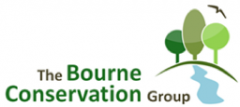The Basics:
The volunteers of the Group are a well known sight in The Bourne as they go about a wide variety of tasks directed at conserving the natural environment and its wildlife. Judged by comments regularly made, their work and achievements are greatly appreciated by both local residents and the many visitors passing through The Bourne village on their way into and out of central Farnham.
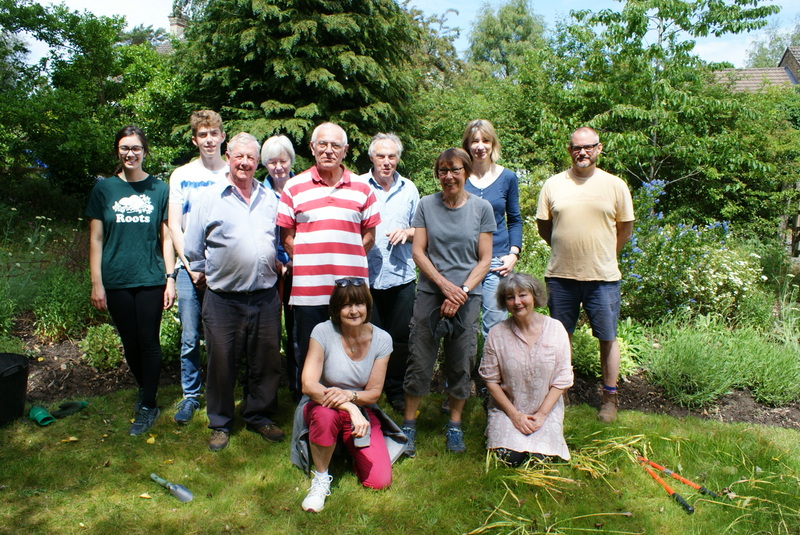
What do we do? Membership, which is free and open to all, is made up of people from many walks of life. The range of work and activities undertaken provides interest and enjoyment for a spread of ages, knowledge, aptitudes and physical abilities. In a typical winter month the tasks might include thinning out holly and laurel trees, working in the Community Garden and keeping the 10 miles of local footpaths clear of excessive vegetation. In summer the emphasis shifts to jobs like tending the plants at The Bourne Crossroads and grass cutting in the Old Churchyard as well as leading wildlife and heritage walks for the benefit of the Community. Never a dull moment in a crowded seasonal calendar!
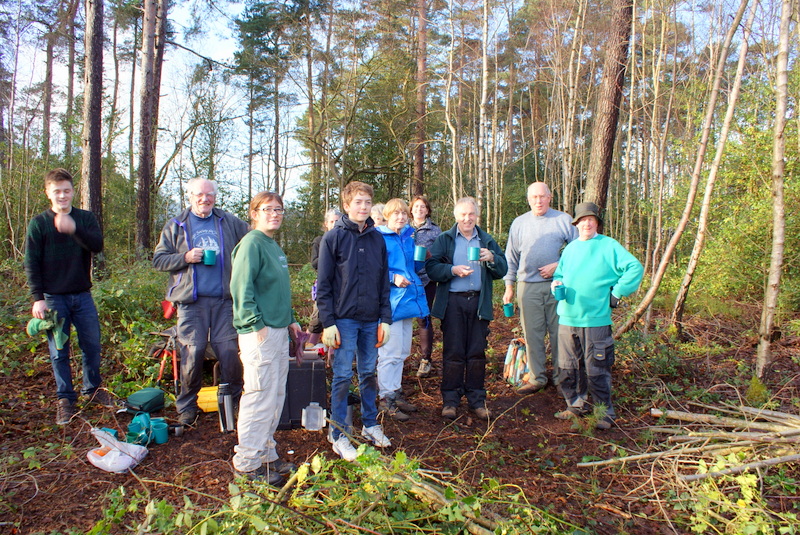
It’s Not All Work! The intention is to make sure that, however demanding the activities, they are always fun. This is readily apparent at coffee break time during the work sessions which provide a chance, not only to draw breath, but also to meet up with old friends and chat about what is going on. There are other opportunities to get together socially during the year such as the Annual Social in January and the AGM in September.
Programme of Conservation Work. The basic work pattern consists of one session each month on a Sunday morning starting at 10.00am and running until 1.00pm. In order to cope with the amount of work to be done, sessions are also held in mid-week which suits the lifestyle of some members. Advance notice of all work sessions and other events is always available on the website Calendar – Bourne Conservation Group. Each individual session is then notified by e-mail direct to members at about one week’s notice, which allows urgent tasks to be dealt with adequately. A News Sheet is sent out regularly.
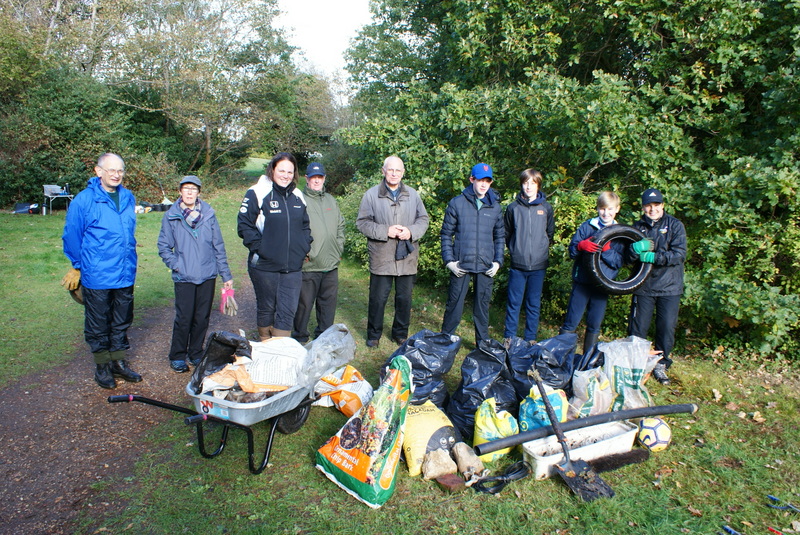
Membership. In addition to regular members (who contribute their labour and pay no subscription), a class of member called the Friends of BCG has been instituted. These are individuals who help and support the Group in a variety of ways including the payment of a small annual subscription which helps towards running costs. In addition to Members and Friends there are other volunteers who make a valuable contribution to BCG activities. These include some residents who help on a daily basis at specific sites, and youngsters, many of whom are undertaking conservation work as part of their Duke of Edinburgh Award sequence.
Cooperation. Although BCG concentrates its work in the local area, it is also outward looking in the way it cooperates with other conservation groups and agencies including the appropriate departments of the local authorities, the Surrey Wildlife Trust, Surrey Voluntary Action and the Blackwater Valley Countryside Partnership. The Group also used its experience to contribute to the formulation of the Farnham Neighbourhood Plan and, on occasions, has staunchly resisted planning applications that are clearly unsatisfactory from an environmental standpoint. In recent years it has played a leading role in establishing the Farnham Biodiversity Group.
Key Milestones.
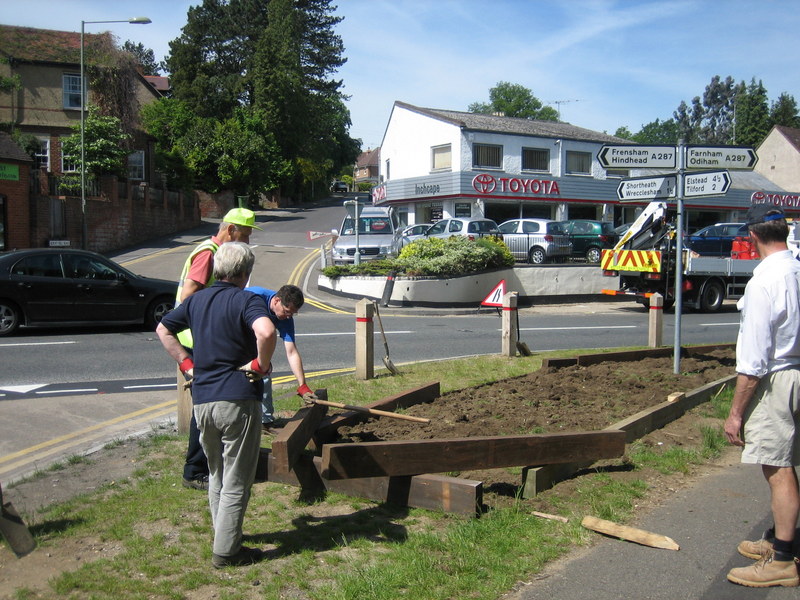
The need for a local conservation group arose in 2002 from the inability of the responsible authorities to allocate sufficient priority or funding to routine estate management tasks. By working in cooperation with them, BCG was able to impact significantly on the maintenance process and this has continued ever since. More recently, however, the emphasis of the Group’s work has considerably widened to focus on the enhancement of biodiversity in the local area and the preservation of its heritage. The significant milestones listed below give a vivid impression of the scope and variety of the work undertaken.
- 2002. Formation of Group by Dr Stan Cockett.
- 2005. Took part in a Wildlife Warden Pilot Scheme and made a start on clearing The Bourne Stream of Himalayan Balsam.
- 2006. Commenced first independent project at The Bourne Crossroads and carried out the first
planting of spring bulbs along roadside verges such as Gravel Hill. - 2007. Start of work on the Middle Bourne Lane Community Garden (MBL) project.
- 2008. Start of practical work in the Old Bourne Churchyard (OCY) closely followed by initiation of a Historical Project
- 2010. Participated for the first time in the Farnham in Bloom competition in the Large Town Category. Commenced work at Underdown Nature Reserve
- 2011. Undertook major work on The Bourne stream in Compton Field and the Redhill House estate.
- 2012. Commenced Bourne Beautification Project in conjunction with The Bourne Residents Association. First participation in Farnham Heritage Weekend.
- 2013. Constitution revised to reflect the emerging role of the Group in biodiversity conservation.
- 2015. Cooperated with Surrey Highways in introduction of new raised flower bed at The Bourne Crossroads and erection of Lower Bourne signs within the Beautification project.
- 2019. Paved Lychgate in OCY and contributed to launch of Farnham Biodiversity Group.
- 2020. Suspended regular work because of Coronavirus Pandemic but created flower bed at Farnham Hospital in recognition of work of The Farnham Dene Medical Practice.
Brief History of BCG
Early Days:
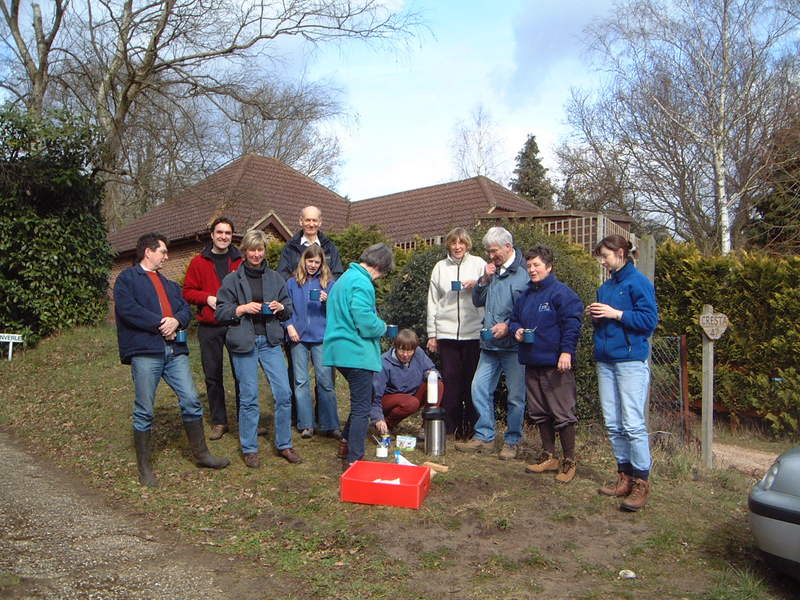
The Bourne is a relatively ‘green’ and attractive area with a number of distinctive features thatmake it a popular place in which to live. Part of this is the network of patches of woodland and over 10 miles of footpaths and bridleways. At the start of the Group’s work, however, the woods were overgrown with an under-storey of laurel and holly and some of the rights-of-way were virtually impassable. It was this situation that led to the formation of BCG and so the focus of work in the early years was very much on woodland management and keeping the footpaths open and safe. At the end of 2008, this was reinforced by the institution by BCG of a local Footpath Warden Scheme to provide a quick response to problems as they occurred. This was eventually replaced by the county’s own Footpath Warden Scheme. The constant attention paid by BCG to the never ending jobs that needed doing over almost 20 years has paid off with the result that the overall state of the network has very greatly improved. The footpaths and open spaces really came into their own during the Pandemic of 2020-21 with many residents exploring them and enjoying the experience. At an early stage the Group sought challenges outside the scope of the local authority tasks. A start was made by organising a survey of The Bourne valley to determine whether or not a well-documented colony of Great Green Bush Crickets near the Fox pub was still present. Sadly, it was discovered that the colony had disappeared probably due to a combination of unmanaged tree growth in the valley and the installation of a new sewer along it. From BCGs point of view, however, this was part of the learning process in beginning to understand local biodiversity issues.
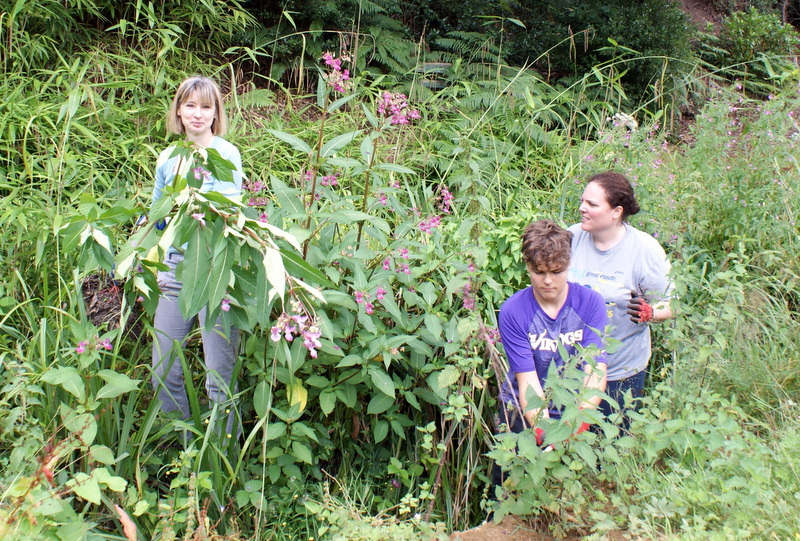
Soon afterwards, at our initiative, a project to rid The Bourne Stream of Himalayan Balsam was started. This is still going on and has helped the Group not only to learn about the problems of invasive, exotic species but has also led to a better knowledge of the local area.
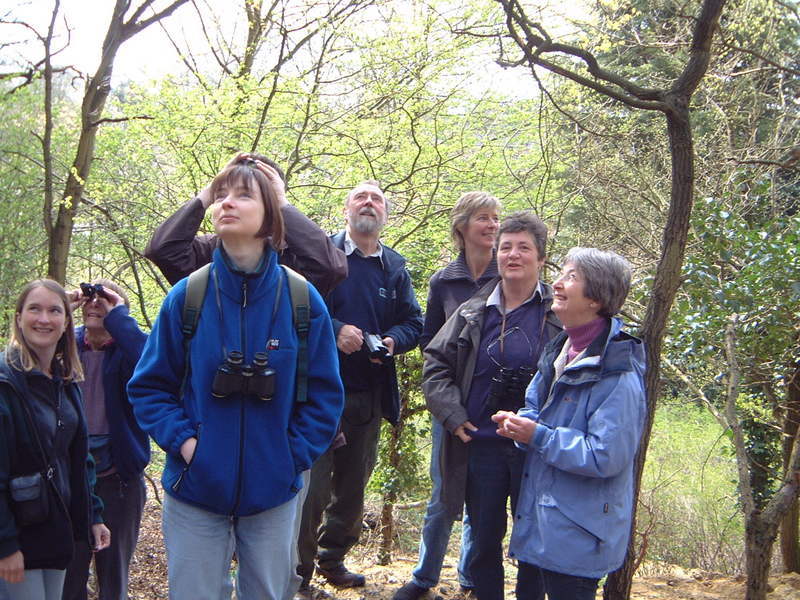
In 2005 another major milestone in BCGs evolution was reached with an invitation from the County Council to be one of two volunteer groups to take part in a Wildlife Warden Scheme to examine the feasibility of introducing a warden into every parish. The final assessment was that this was not a practical proposition but the exercise had been invaluable in further developing Group knowledge and skills. It was also the beginning of an enduring partnership with the Surrey Wildlife Trust who administered the trial. Prior to that it was the Blackwater Valley Conservation Trust that supported us technically for which we have always been most grateful.
Projects
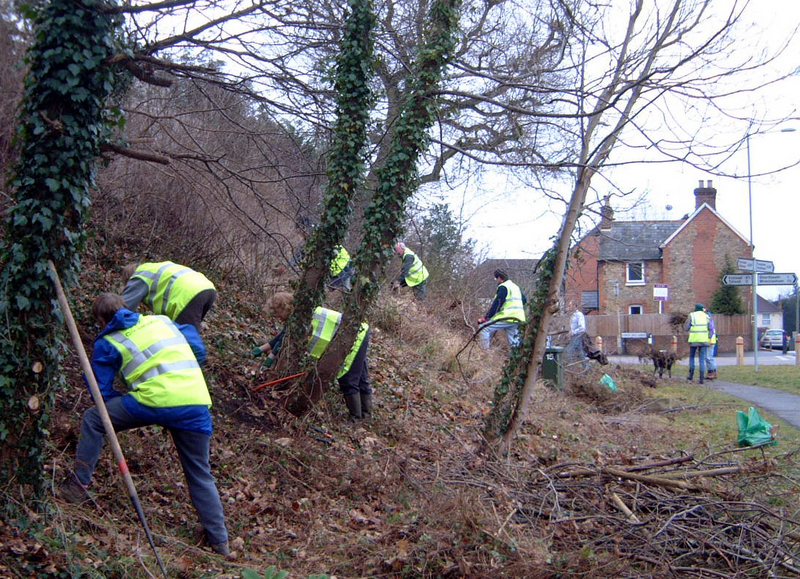
By this time the Group’s profile had gradually been rising but it was decided that further steps should be taken in that direction as a way of recruiting new members as well as increasing local awareness of the importance of conservation. This resulted in the launch of BCGs first stand-alone, funded project at The Bourne Crossroads. This consisted of clearing the overgrown and litter-strewn embankment and planting it with native species including wildflowers. Its scope was extended to renovating this prominent site in the village by creation of a raised flower bed using wooden sleepers and restoring the bench seat.
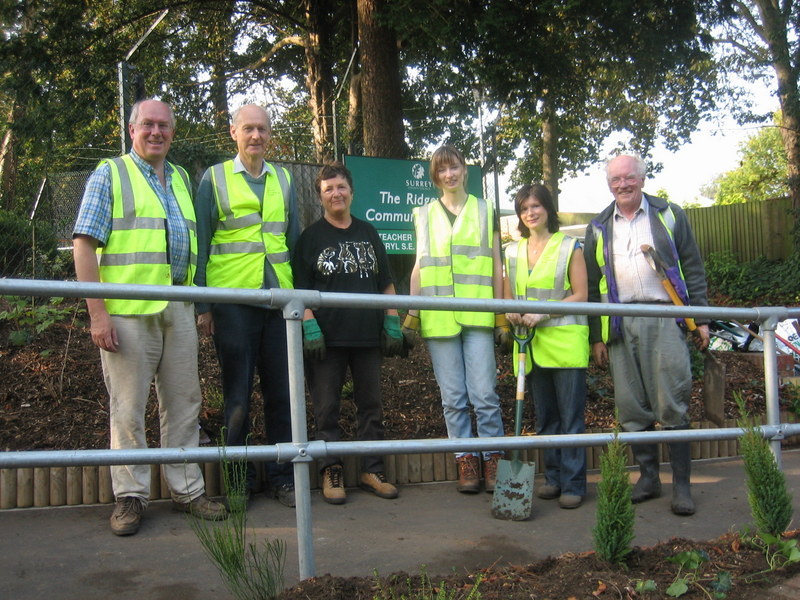
The success of this Crossroads endeavour led to a series of similar projects of gradually increasing complexity. These have included planting shrubs at the Ridgeway School entrance, re-aligning the management of the Middle Bourne Lane Community Wildlife Garden and taking over management of the Old Bourne Churchyard for the Church. Each one has been approached in a similar way: drawing up a project plan using the Surrey Biodiversity Action Plan as a guide and drawing upon advice from colleagues in the Surrey Wildlife Trust and other professional organisations as required. In this way the Group’s own expertise on local wildlife and habitat creation has increased considerably. This was well illustrated in 2009 when the Middle Bourne Lane Community Wildlife Garden was entered into a national competition sponsored by the Wildlife Trusts and was judged to be the national winner in the Small Projects Category, attracting a prize of £1000.
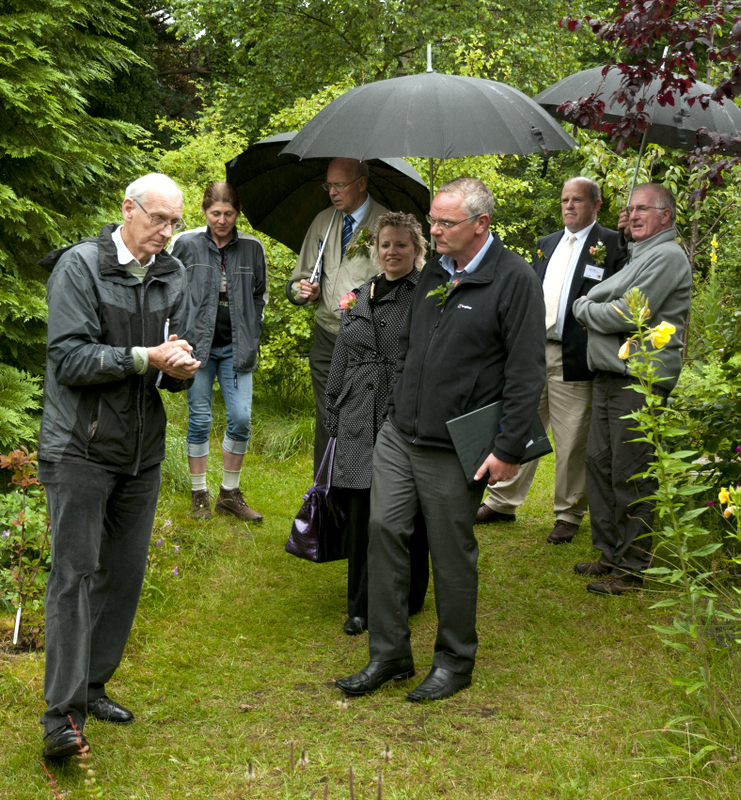
This trend was picked up in later years when Farnham entered the Large Town category of the Royal Horticultural Society’s Nation in Bloom Campaign. BCG was proud every year to present both the Middle Bourne Lane Community Garden and Bourne Crossroads to the judges and pleased that the sites scored particularly highly in the Environmental Responsibility and Community Activity sections. This led to an appearance on BBC television in 2016 and contributed to the Town’s first national gold award the following year.
The project work impacted on the administration of BCG because it needed the ability to bid for funding and to carry out risk assessments as well as being backed by insurance cover. The methodical approach required for this was formally set out in the Group’s Health and Policy Statement. This was put to a real test in 2012 when a successful bid for funding was made to South East Water to clear up the water course in Compton Field the poor state of which had become apparent during our Himalayan Balsam clearing operations. The result was a major project in early 2013 to manage the vegetation as well as removing a vast amount of litter of all types.
History and Heritage
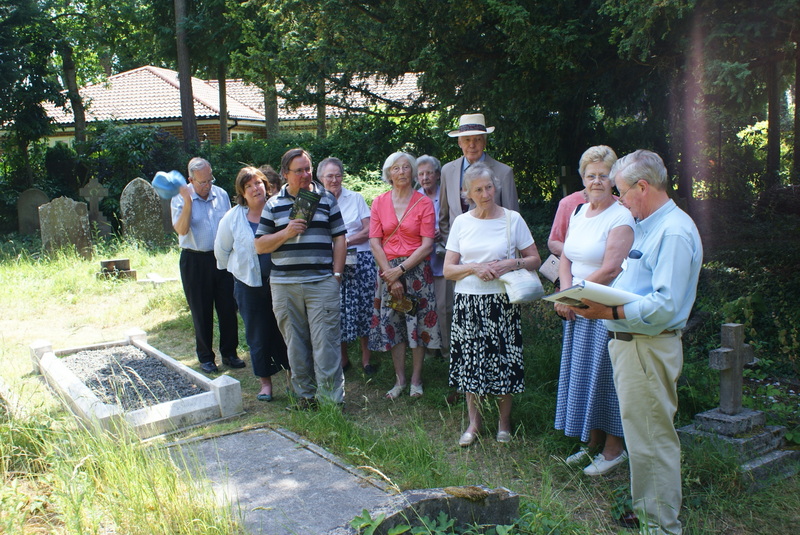
As its knowledge of the local area grew the Group realised the close association between its practical conservation work and the history of the area. This began to emerge once work started on the Old Bourne Churchyard at the end of 2008. The result was the initiation in 2010 of a more formal Historical Project to trace and record as much information as possible about the history of the first church of St Thomas- on-The Bourne and the 800 or so people buried there. This project has led not only to building a considerable knowledge base of the area and its people but also to BCG leading local walks. These started as private ventures for local groups but subsequently enabled the Group to contribute to the Farnham Society’s Heritage Weekends every September and to participate in a new venture from 2017, the Farnham Walking Festival. Themes have included the Life and Times of George Sturt, Farnham’s Water Supply, and Green Spaces of The Bourne.
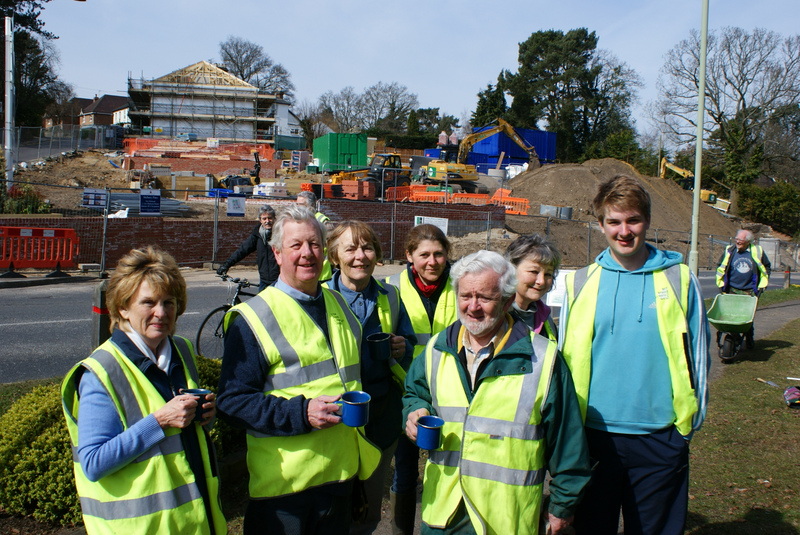
The book that made George Sturt’s name was ”Change in the Village” published in 1912 and describing the difficulties experienced by the rural poor in places like The Bourne at the turn of that century. A hundred years later, as it went about its work, BCG, witnessed local changes of a different type, many of them brought about by increased development activity as illustrated in the photograph showing the building in 2007 of Blackthorn Close on the site of the old garage shown elsewhere.
An unwanted milestone for BCG was reached in 2011 with the sudden death of the founder of the Group, Dr Stan Cockett, whose inspiration achieved so much for The Bourne. To see a full tribute to Stan, along with an account of the unveiling in 2013 of a commemorative seat to him on the path through Paradise Wood now called Cockett’s Path, click here.
Maintaining the Estate
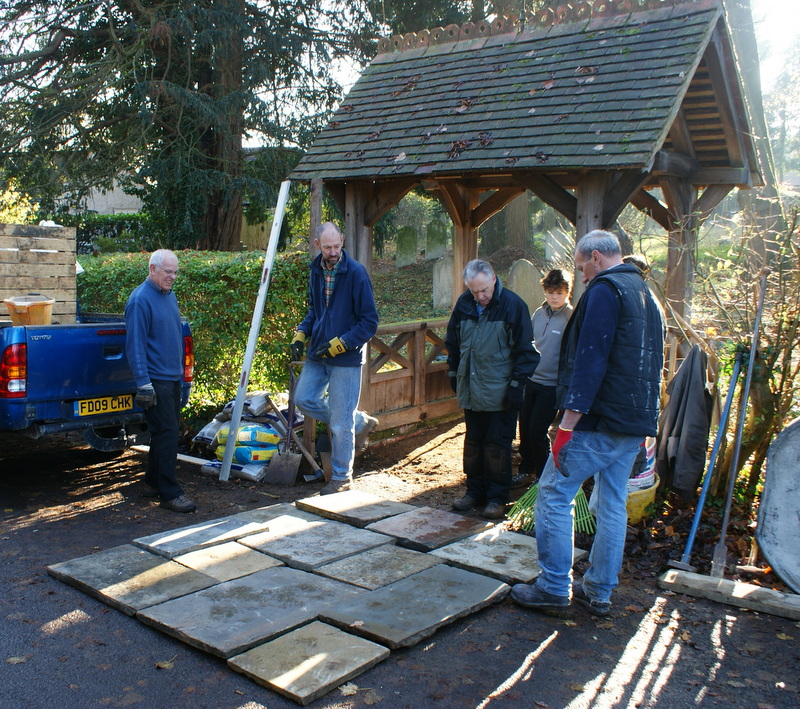
Experience has shown that once started, a conservation project can never be completely abandoned. There will always be routine maintenance that needs doing guided by comprehensive maintenance plans, otherwise nature takes over and all the earlier good work will be lost. Therefore, as BCG has steadily undertaken more projects, the overall maintenance task has risen and the availability of volunteer labour and management skills becomes a limitation. This has meant that for some years the Group has had to concentrate on keeping existing sites in tip top condition while finding it impossible to initiate any major new projects. Exceptions were made for small projects such as paving the Lychgate at OCY with York Stone in 2019 and creating a flower bed at Farnham Hospital in 2020.
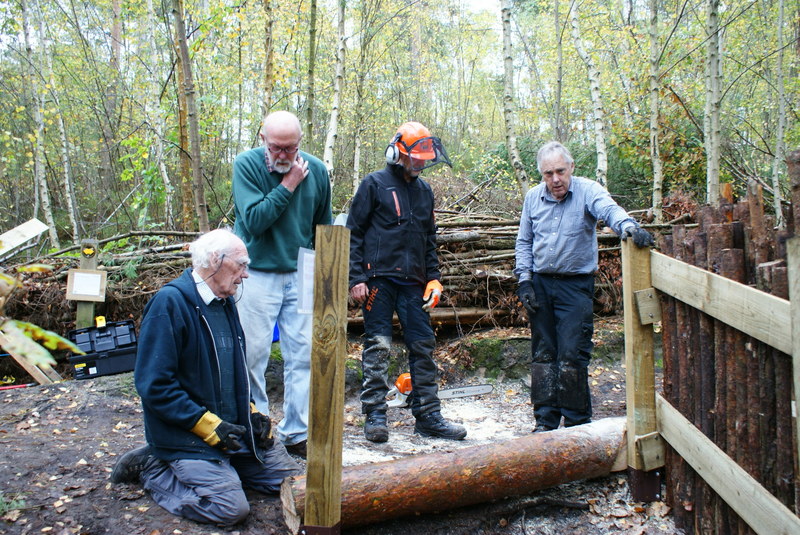
The Group was also very pleased to assist in one project where management effort was not required. That was in Sable Wood where the owner who took it over in 2011, Bruce Callander, gives wildlife priority and manages the site for the environment. We have been able to contribute local knowledge and a certain amount of physical labour on tasks such as clearing gaultheria and step building, and have very much enjoyed doing so. Bruce has become a staunch Friend of BCG and presented the Group with a commemorative book about his Wood at the AGM in 2019.
The Approach to Biodiversity
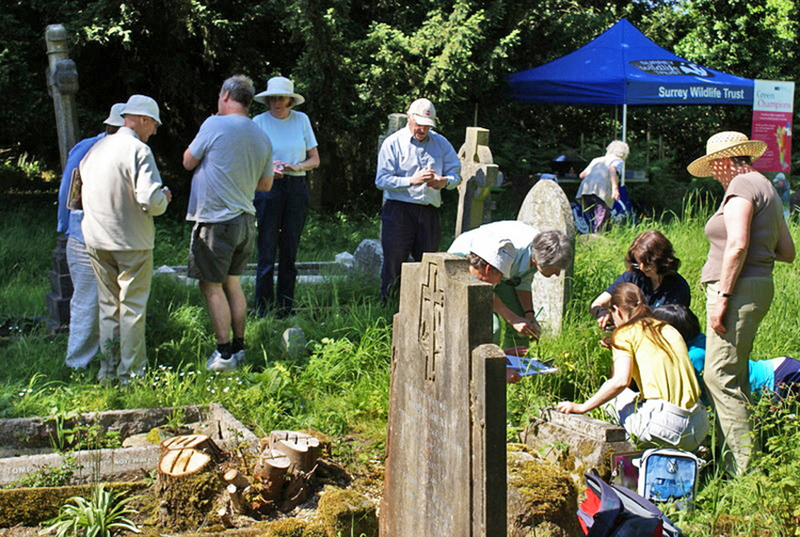
It will be apparent from this brief history of BCG that in its early years the focus for the Group was practical work for the local Councils with the emphasis on clearance of vegetation, especially where holly and laurel were taking over areas of woodland and hedgerows to the detriment of less dominant native species like wildflowers. This had a good general effect on the local environment as called for in the Constitution adopted in 2003 which stated that the mission was “to maintain and improve public open areas and rights-of-way for the benefit of residents, wildlife trees and plants” Gradually the scope of activity widened, as for example when much help was given to RSPB as they started to clear the regimented pine trees at Farnham Heath in order to restore the original heathland. Mainly this involved pulling out the invasive gaultheria but also in building an Otter Holt on the Wey in 2004. This was followed by the hunt for the Great Green Bush Cricket (through which exercise much was also learned about other bush crickets) and the start of clearance of Himalayan Balsam along The Bourne Stream. Then, as new projects at The Crossroads and MBL were started, the need for wildlife surveys became apparent and these were conducted with the help of Surrey Wildlife Trust. Later still, in 2008-9 at the Old Churchyard, help also became available from the wife of the Vicar who had ecological skills. It was at about that time that Dr Martin Angel brought his formidable skills to the Group by not only assisting with the surveys but also in using them as a training medium for other members. By this time in the public domain a push for biodiversity was beginning to become apparent as a result of growing awareness of the effects of over development of the planet and Climate Change. BCG therefore became aware of the real value of the work it was already doing and what more needed to be done. For that reason the Constitution was revised in 2013 with a new mission “to improve The Bourne area of South Farnham by maintaining and enhancing its landscape and biodiversity with due regard to its historical associations.”
With this shift in emphasis, coupled with the publicity being given explicitly to the plight of bees, the Group sought new ways of enhancing the biodiversity of its sites. A good example was the MBL Garden where new flower beds were opened up using plants specifically chosen to provide food and nectar for bees and other pollinators as far as possible throughout the year. Displays on our stands at The Bourne Show sought to bring these issues to the notice of the public. Also, attention was given to how individual sites linked to other features such as hedgerows and roadside verges to form corridors to assist the passage of wildlife through the increasingly urban area of the Town. As a result of a special meeting requested by the Group, the Surrey Wildlife Trust enabled Mike Waite to conduct a study of the likely corridors in Farnham which has proved invaluable in providing material for the Neighbourhood Plan and for future studies of this topical and important subject.
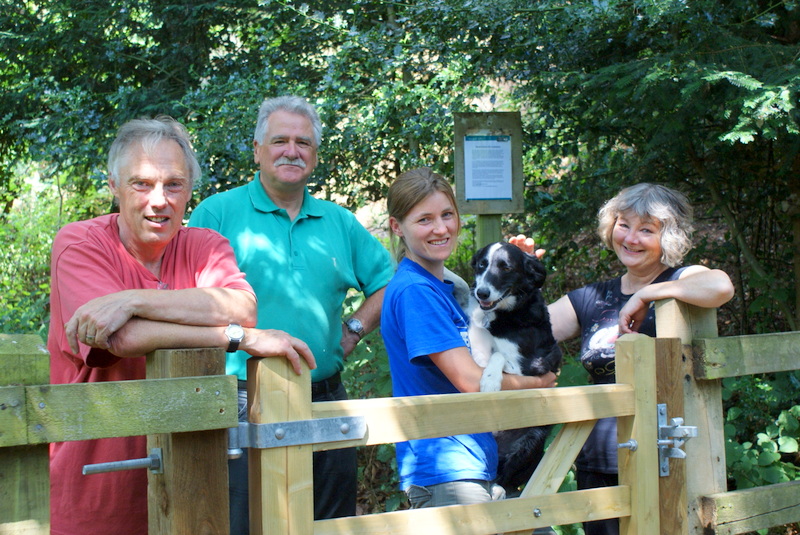
The strong relationship with the Surrey Wildlife Trust was reinforced from 2014 when BCG agreed to take an increased role in the management of Underdown, the Trust’s smallest nature reserve located in The Bourne valley, where the Group had previously assisted for several years.
Once in his stride Martin Angel decided to make a special case of Moths of which there are more than 2000 species in the UK and the presence of which is indicative of the general health of the local ecological environment. Ever since that time he has devoted many hours of time at night trapping, photographing and recording the local moth population at sites throughout the Farnham area. By 2020 he had recorded 1000 different species including some initial and rare sightings. This was a remarkable piece of work for which he was presented with an Award for Services to Farnham.
The surveys carried out by the Group on its sites of interest has enabled a good picture of the biodiversity of The Bourne to be built up and this is illustrated here Biodiversity in The Bourne – Bourne Conservation Group.
In 2018 at a meeting in the Town Office called to address rogue grass cutting by the Waverley Contractor at the Crossroads, the idea of Biodiversity Action Plan was floated by Martin Angel. This gained the support of Cllr Carole Cockburn because such a Plan would follow on from the broader environmental policies set out in the Farnham Neighbourhood Plan. BCG cogitated on this idea for some time and decided to call a meeting of potentially interested parties in the Town Office in February 2019. This was a resounding success with some 20 enthusiastic groups and organisations signing up to become Partners in the venture. This led to the formation of a Community Interest Company as a base line organisation and since that time good foundations have been laid although progress has been slow in part due to the restrictions of the Pandemic Year. Nevertheless a Second Draft Farnham BAP was circulated for comment in April 2021.
